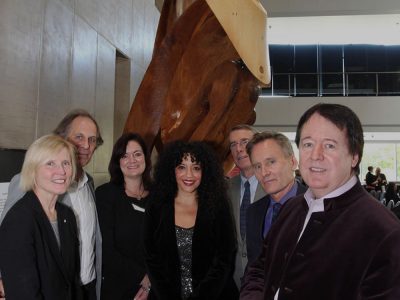By Alex Quesnel
For years, Canada’s first dinosaur fossils remained in the collections of the Canadian Museum of Nature, overlooked by scientists.
Now, more than 120 years after being discovered in what are now areas of southern Alberta and southern Saskatchewan, a Carleton University undergraduate student has begun the painstaking work of cataloguing them.
Brigid Christison is working closely with her supervisor Jordan Mallon, research scientist and paleobiologist with the museum, to identify the bones. Mallon is also an adjunct research professor in Earth Sciences at Carleton.
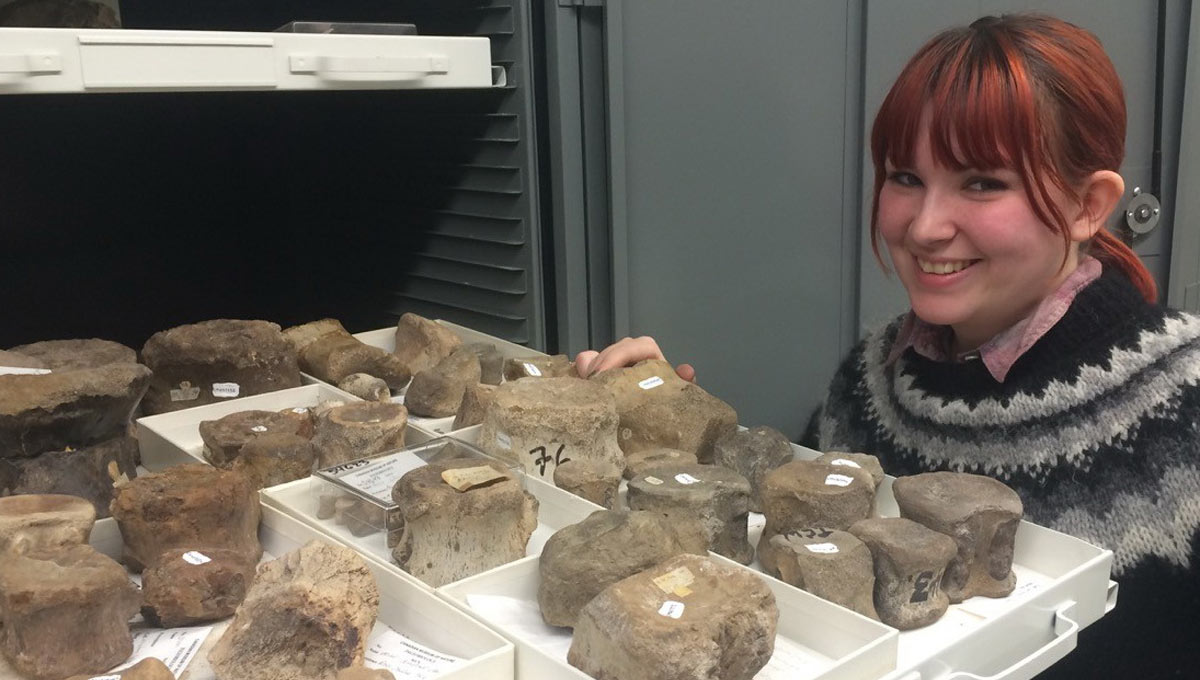
Carleton University undergraduate student Brigid Christison has begun cataloguing Canada’s first dinosaur fossils.
“We want to know what was found, and to compare the diversity of fossils found back then with what we know today from the sites,” says Christison, now in her third year of an Earth Sciences degree with a focus on vertebrate palaeontology and palaeoecology.
Her project involves identifying each bone and the location in which it was found. Unfortunately, the poorly documented bones make for a difficult task. “Some of the bones weren’t labelled or anything,” she says. “It’s as if the discoverers just picked the bones up, put them in a box and shipped them home.”
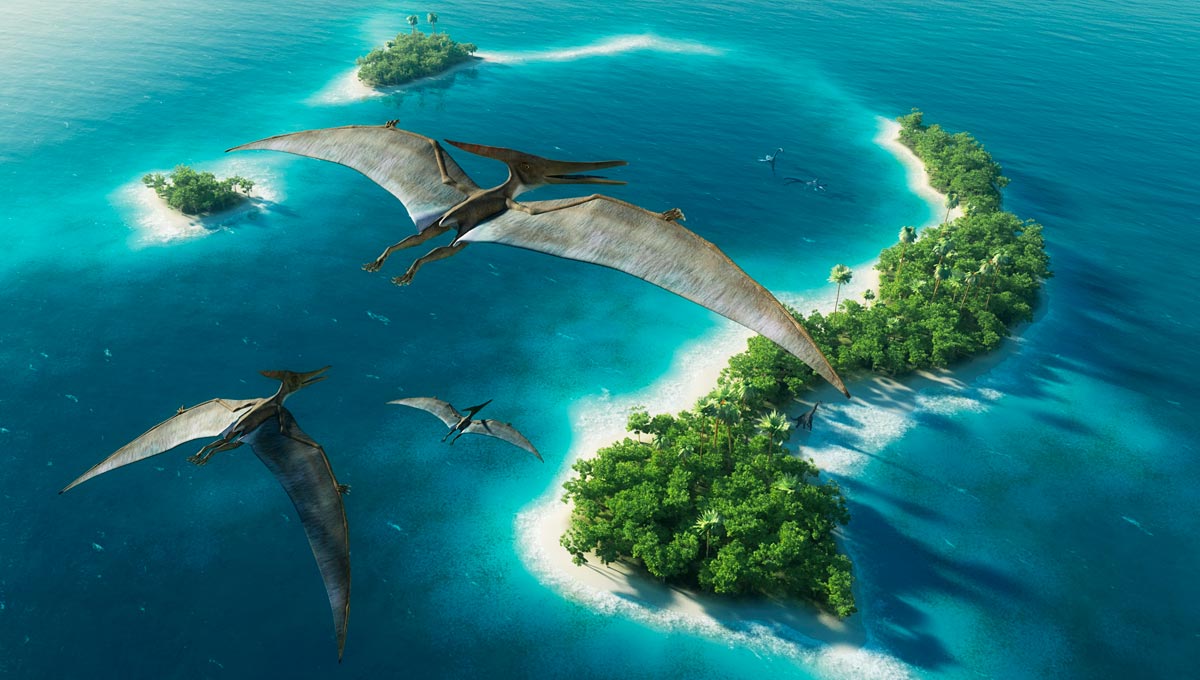
The team of scientists who found the fossils at various sites throughout the 1880s included major figures such as George Dawson, Thomas C. Weston and Joseph Tyrrell, who were working for the Geological Survey of Canada (GSC). But as Christison explains, they weren’t properly trained in vertebrate palaeontology or equipped to comprehend the magnitude of the discovery.
“They were almost all geologists. Science wasn’t as specialized back then,” she says. “Dawson, who found the first bone, was a geologist by training, so he likely didn’t know much about dinosaurs.”
It is likely the bones were found by accident while looking for natural resources such as coal. If anything, the GSC tried to find fossils, not complete dinosaurs, just to prove that they had indeed existed in Canada.
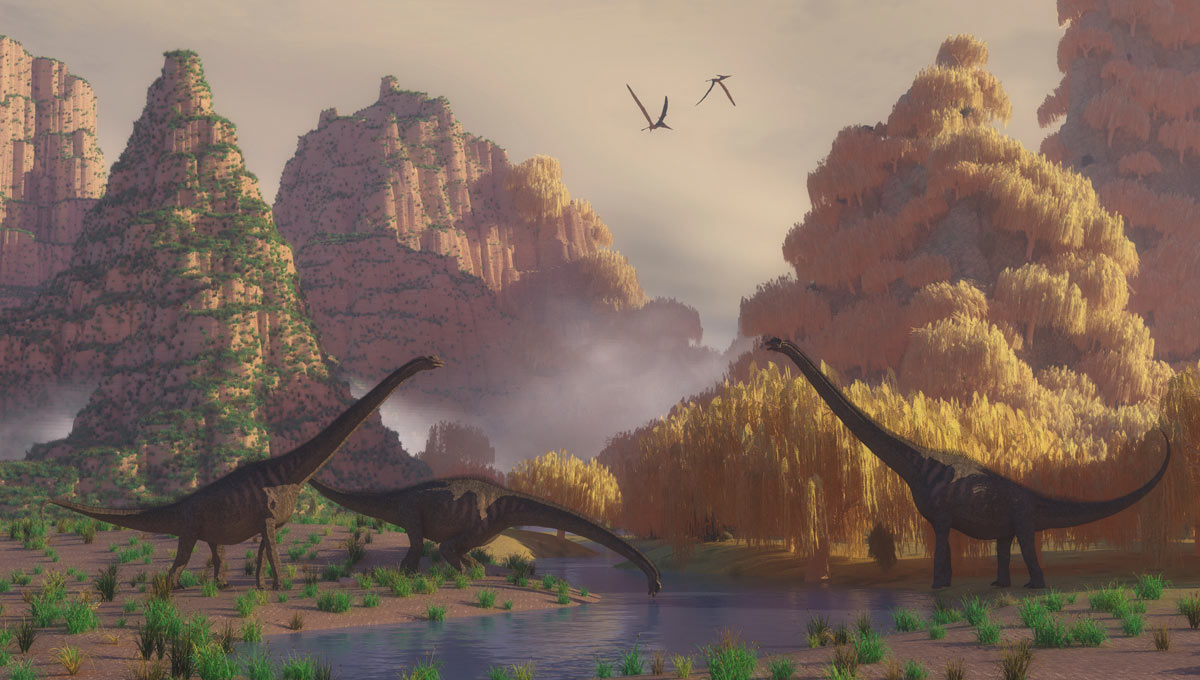
About a decade before the Canadian discoveries, the United States had experienced the “Bone Wars” pitting two famous palaeontologists—Edward Drinker Cope and Othniel Charles Marsh—against one another. It was a period of intense fossil speculation and discovery.
Dawson, who found the first Canadian dinosaur bones in 1874, actually sent his findings to Cope in Philadelphia, because the Geological Survey of Canada had nobody qualified to examine them.
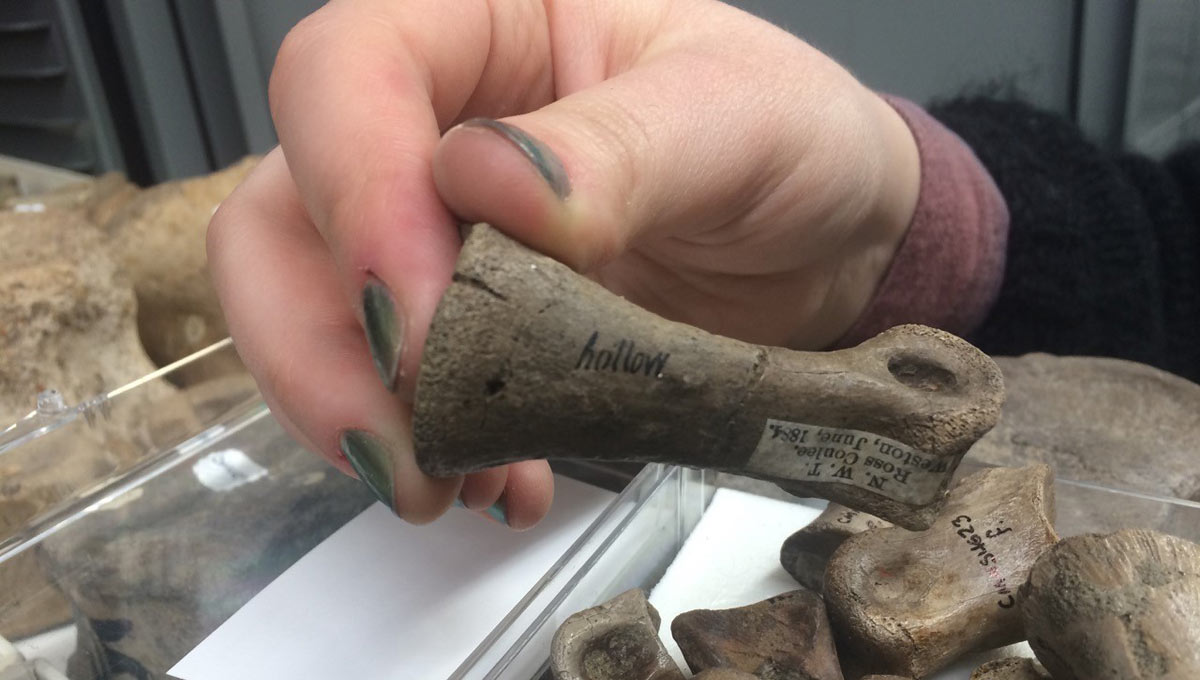
Christison’s project involves identifying each bone and the location in which it was found.
While it took Canada a little longer to join the dinosaur craze, today the Western provinces are known for some of the richest dinosaur locales in the world.
Christison travelled to Alberta’s Dinosaur Provincial Park with her father in the summer of 2013, where she noticed that some dinosaur bones are more valuable to scientists than others.
“Tour guides were literally kicking some vertebrae out of the way as they walked,” she says. “So today I don’t think people would have even bothered picking these bones up.”
Nevertheless, the fossils collected more than a century ago tell an important historical story. And while more complete fossils of the same creatures have since been found and scientifically described, Christison’s work is still vital according to her supervisor.
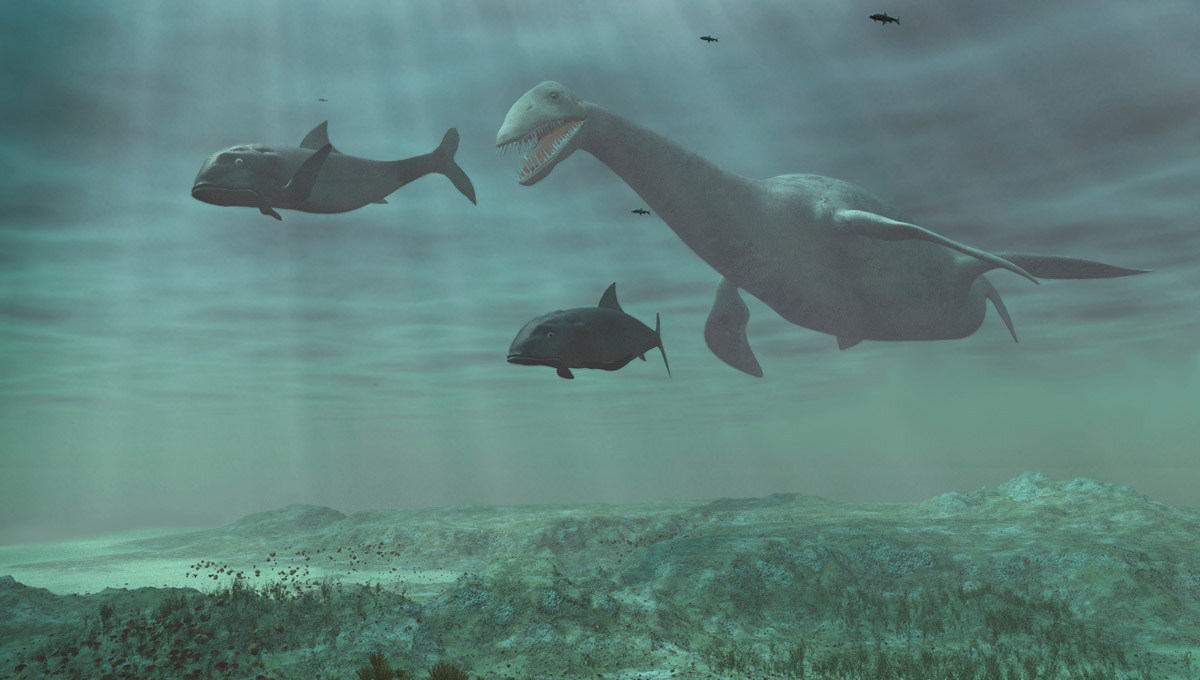
“We know a lot about where the early GSC collectors went and what they did,” says Mallon. “But we still know very little about precisely what they collected. That’s the significance of Brigid’s project: to document these historically important finds and properly credit the men who collected them.”
Christison’s findings will be compiled in a paper for school, a report for the museum and an abstract at an upcoming conference.
Adapted from a story by the Canadian Museum of Nature
Wednesday, May 11, 2016 in Faculty of Science, Geology, Research
Share: Twitter, Facebook

